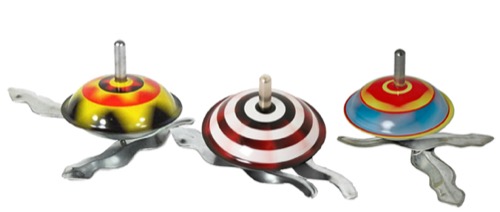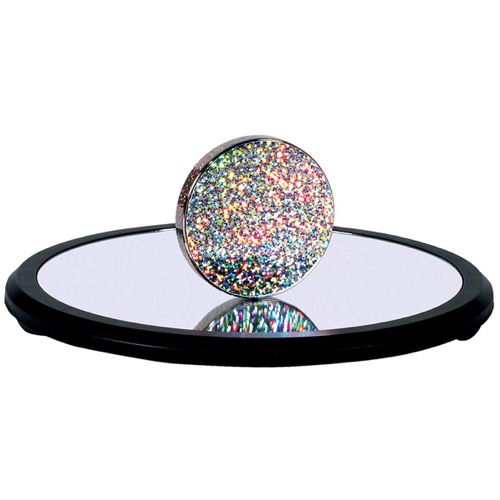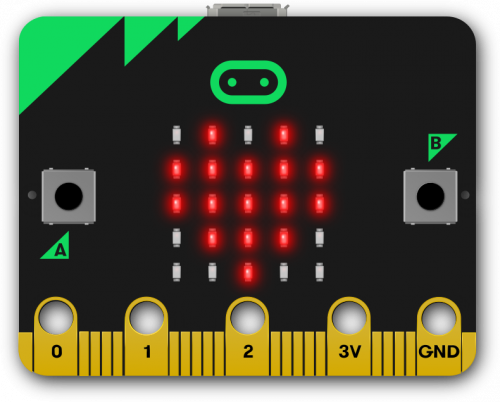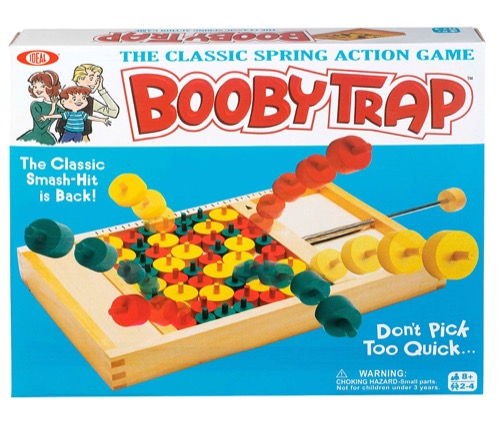Michelle Hlubinka, Former Education Director at Maker Media

Cool Tools Show 186: Michelle Hlubinka
Our guest this week is Michelle Hlubinka. Michelle has made a career of promoting playful learning through people-centered uses of technology in schools, museums, and neighborhoods. She spent most of the past 12 years at the forefront of Maker Media’s efforts in education, establishing key kid-focused programs—Young Makers, School Makerspaces and School Maker Faires—and running Maker Camp. In short, she is a maker of makers, and also a maker herself.
Subscribe to the Cool Tools Show on iTunes | RSS | Transcript | Download MP3 | See all the Cool Tools Show posts on a single page
Show notes:

Bibo Magic Top with Slithering Snakes ($8)
We all love magnets in my family. They’re just these invisible powers that enchant any kid, and my kids will just stay wrapped with this stuff for hours. My kids have been playing with Buckyballs for years, and they’re still a few years under the recommended age of 14+. We buy all kinds of magnetic playthings when we come across them. And this was something that I didn’t even know what it was until I walked into the store Joie de Vivre in Cambridge, Mass and they said, “Have you seen this?” I love this sweet spinning top and pair of metal snakes. What’s cool about it is that it uses magnetism mechanically, translating the rotational motion of the bottom tip of the top into the wiggly, linear motion of the snakes. You spin the top and feed the little snakes in and zip, the wavy edge of the snakes tuck into the tip and the rotating top tip pulls the snakes forward. There are two snakes. You have to try to get both of them to kind of slide around it at the same time. It’s one of those classic metal toys, and it was a great little souvenir to bring home to my kids.

Toysmith Euler’s Disk ($35)
This is a toy based on a physical phenomenon that you can also see in a spinning coin. The specifics of the Euler’s Disk were worked out by an aeronautical engineer named Joseph Bendik working with some colleagues, not by Euler, but I gather it’s named after Euler because he studied similar physics a couple of centuries ago. You spin it and it spins and spins and then at the end it does something truly unexpected — it levitates for a split second before it zaps down. It’s best experienced in person. They tried to make it into a party toy by adding all these holographic magnets that you could stick to the top. So you can dim the lights and shine a light and have things reflect on the ceiling.

micro:bit
Micro:bit comes from a tradition that we call programmable bits where you’ve got a a programming environment where you can communicate with this microprocessor to tell it what you want it to do. And they really souped up this particular programming board. The micro:bit has a five by five LED display and it’s got a couple of buttons and several output ports and you can connect to it with USB and radio and Bluetooth and you can connect servos and lights and speakers, just about anything that you pump power through and it’ll produce an effect. So it’s really versatile and the barriers to entry are low. It has what my mentor Mitchel Resnick describes as important aspects for any “lifelong kindergarten” tool: low floors, high ceilings, and wide walls. It’s also super cheap, like $15, and a little more if you buy a kit with things to plug into it. Best of all, it’s a quick onramp to get something done with it. The BBC did a bang-up job of putting together materials to support its use.

Booby Trap Classic Wood Game
This is a game that I found at Community Thrift, which is this great resource in the Mission (SF). And I would routinely go in there and find all these beautiful vintage games and this was one of them. It was made by Parker Brothers. It’s just gorgeous. I would put this around 1950, 1960. The rules of the Booby Trap are truly mechanical in that they are all physical and it’s as much a competition against your opponent as it is against the laws of nature itself. In this way it’s not unlike Jenga, but in Booby Trap, you use your skills in observation and prediction to decide which piece to remove next without letting a spring jostle the whole setup.There are three colors of playing pieces, shaped like disks with little knobs on top you can grab. The three colors are different sizes and point values, and your goal on each move is to remove just one of these disks without the entire thing collapsing on itself, rearranging into a new structure with a different set of force vectors pushing this way and that way against the spring. It’s such a simple game that you can learn how to play it in well under a minute, and yet I find it very satisfying, with a little bit of that tension of the notorious game Perfection, and as I mentioned Jenga, but not as cataclysmic and chaotic nor as anxiety-producing.
Also mentioned:

Diffraction grating sheet
The diffraction grating sheet is this thin piece of plastic that’s been etched to create prism behavior. So usually people use this inside of a spectrograph to analyze light. I was trying to create something like my Rainbow Center. I have this Kikkerland Rainbow Spinner on my window with a crystal at the bottom and a solar panel at the top where it would activate the gears and I was trying to make a cheap toy version of this for a science kit that I was designing. And so we got this sample and I just happened to put it onto my window because I wanted to see if I can see something interesting through it. Then, on one of my work from home days, all of a sudden I noticed this brilliant gorgeous rainbow across the top of my ceiling and anyone who knows me well knows that I love rainbows and it drives me crazy that we live in drought stricken California where the rain does not happen enough for my rainbow needs and ever since we discovered that, we’ve left it on our window and we’ll move it around a little during for different seasons to make sure we get enough light on it. This casts a rainbow or a spectrum about 10 feet long and a foot wide on our ceiling every afternoon that’s sunny enough.









